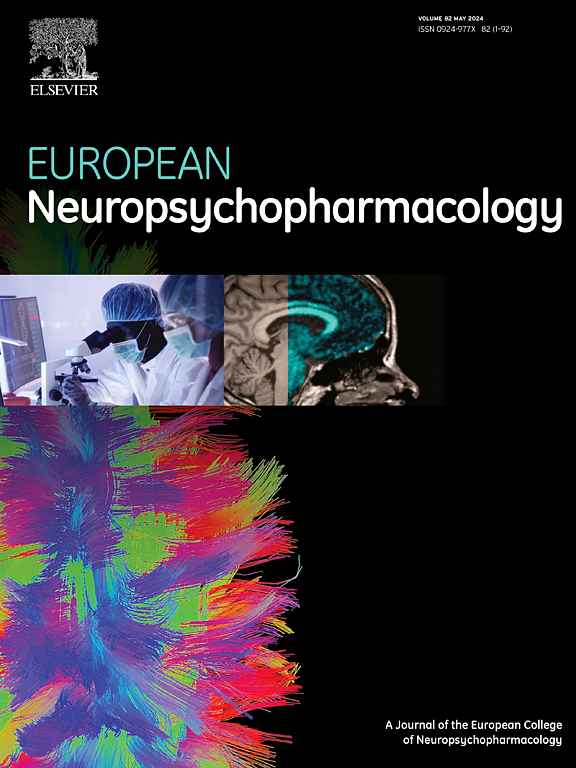Antidepressant use during pregnancy and risk of obstetrics and neonatal outcomes: A propensity score-weighted population-based cohort study in 2003–2018
IF 6.1
2区 医学
Q1 CLINICAL NEUROLOGY
引用次数: 0
Abstract
Gestational antidepressant exposure may be associated with increased risks of adverse obstetric and neonatal complications, but many earlier studies inadequately addressed confounders and were conducted in Western countries. This population-based cohort study identified women aged 15–50 years who delivered first/singleton child in 2003–2018, using data from electronic health-record database of public healthcare services, with an aim to examine the risks of a comprehensive range of adverse obstetric and neonatal outcomes associated with gestational antidepressant use in a predominantly Chinese population in Hong Kong. Propensity-score fine-stratification weighted logistic-regression analyses were performed to assess the risks following gestational exposure to any antidepressant, specific drug classes and individual antidepressants. Sensitivity analyses addressing exposure-misclassification, confounding by underlying condition and treatment indication were conducted. Our results showed that, of 466,139 women, 2699 redeemed ≥1 antidepressant prescription during pregnancy. Any antidepressant exposure was associated with increased risk of somatic admission ≤90 days after index-delivery discharge (adjusted odds-ratio: 1.29 [95 % CI: 1.11–1.50]), low 1-minute Apgar score (1.31[1.08–1.60]), and special-care-baby-unit (SCBU) admission (1.41[1.30–1.54]). Selective-serotonin-reuptake-inhibitors (SSRIs) and tricyclic-antidepressants were associated with elevated risk of post-delivery somatic admission and SCBU admission. SSRIs were associated with low 1-minute Apgar score, serotonin-and-norepinephrine-inhibitors were related to SCBU admission. Significant associations were not consistently affirmed across sensitivity analyses. Most individual antidepressants were not associated with most adverse outcomes, albeit limited by a reduced sample size. In conclusion, antidepressants are generally not associated with most adverse obstetric and neonatal outcomes except transient neonatal symptoms. Further research clarifying comparative reproductive safety of individual antidepressants is required.
妊娠期间使用抗抑郁药与产科和新生儿结局风险:2003-2018年倾向评分加权人群队列研究
妊娠期抗抑郁药物暴露可能与产科和新生儿不良并发症风险增加有关,但许多早期研究没有充分解决混杂因素,而且是在西方国家进行的。这项基于人群的队列研究使用公共医疗服务电子健康记录数据库的数据,对2003-2018年分娩第一胎/单胎的15-50岁女性进行了研究,目的是在以华人为主的香港人群中,研究与妊娠期使用抗抑郁药相关的全面不良产科和新生儿结局的风险。采用倾向评分精细分层加权logistic回归分析来评估妊娠期暴露于任何抗抑郁药、特定药物类别和个体抗抑郁药后的风险。敏感性分析解决暴露错误分类,混淆的基础条件和治疗指征进行。我们的结果显示,466,139名妇女中,2699名在怀孕期间服用了≥1种抗抑郁药物处方。任何抗抑郁药物暴露与指数分娩出院后≤90天躯体入院风险增加相关(调整比值比:1.29 [95% CI: 1.11-1.50]), 1分钟Apgar评分低(1.31[1.08-1.60])和特殊护理婴儿单元(SCBU)入院风险增加(1.41[1.30-1.54])。选择性5 -羟色胺再摄取抑制剂(SSRIs)和三环类抗抑郁药与产后躯体入院和SCBU入院风险升高相关。SSRIs与低1分钟Apgar评分有关,血清素和去甲肾上腺素抑制剂与SCBU入院有关。在敏感性分析中,没有一致地确认显著关联。大多数个体抗抑郁药与大多数不良后果无关,尽管受到样本量减少的限制。总之,除了短暂的新生儿症状外,抗抑郁药通常与大多数不良产科和新生儿结局无关。需要进一步的研究来阐明个体抗抑郁药的生殖安全性。
本文章由计算机程序翻译,如有差异,请以英文原文为准。
求助全文
约1分钟内获得全文
求助全文
来源期刊

European Neuropsychopharmacology
医学-精神病学
CiteScore
10.30
自引率
5.40%
发文量
730
审稿时长
41 days
期刊介绍:
European Neuropsychopharmacology is the official publication of the European College of Neuropsychopharmacology (ECNP). In accordance with the mission of the College, the journal focuses on clinical and basic science contributions that advance our understanding of brain function and human behaviour and enable translation into improved treatments and enhanced public health impact in psychiatry. Recent years have been characterized by exciting advances in basic knowledge and available experimental techniques in neuroscience and genomics. However, clinical translation of these findings has not been as rapid. The journal aims to narrow this gap by promoting findings that are expected to have a major impact on both our understanding of the biological bases of mental disorders and the development and improvement of treatments, ideally paving the way for prevention and recovery.
 求助内容:
求助内容: 应助结果提醒方式:
应助结果提醒方式:


